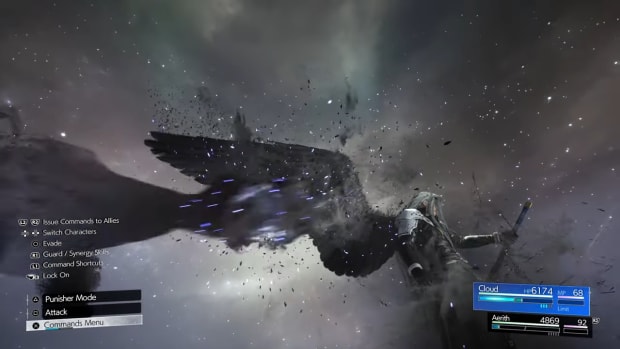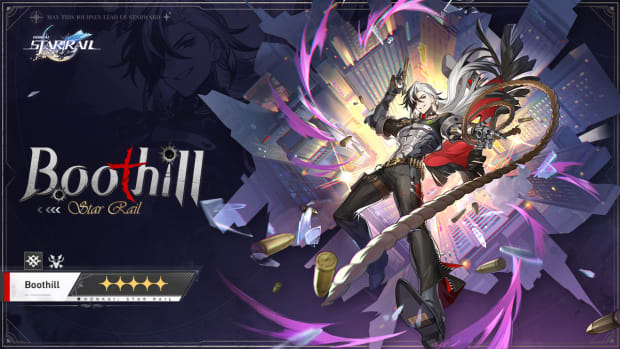
Final Fantasy 16 interview: Naoki Yoshida on combat, lessons learned, and what’s next
Final Fantasy 16 has been out for a month, and now that the dust has settled, it’s good to take a look back at a few of the core principles that inspired it.
GLHF had the chance to sit down with producer Naoki Yoshida, who talked us through the past, the present, and the future of the franchise under his guidance.
With each game in the series being its own standalone story, we asked Yoshida what features make a game a Final Fantasy game, how it was to move from turn-based to real-time combat, the lessons learned from the previous FF installment, and what’s next for the development team. Here’s what he had to say.
GLHF: What’s the reasoning behind moving to a real-time combat system instead of the classic turn-based one? Did you consider going for a turn-based combat system at some point in the process?
Naoki Yoshida: I want to let everyone know, we’re really not against turn-based games. We’re fans of them too. But for the story we wanted to tell, the look of the game and a feeling of dynamic, non-stop action felt best suited to the story and what we wanted players to feel. We decided turn-based or a mix of turn-based with action that interrupts the flow, it didn’t feel right.
Having played and worked on Final Fantasy 14, it’s given me the opportunity to travel around the world meeting fans and journalists and talking about the game and Final Fantasy in general. From speaking with so many fans as well as a lot of research we conducted about Final Fantasy, we have a good idea of what people think about the series, what they like, what they don’t like, what they want to see more of. With Final Fantasy 16, I wanted to create a game that would appeal to FF fans and a broader audience and that a wide range of gamers from different generations would be happy to play.
We also looked at the games we’re playing the most, across the development team, and it’s primarily action games that are what everyone is playing right now, and we felt we could bring that element to Final Fantasy.
Is the series getting back to its roots at some point, or do you expect real-time combat to be the future of the mainline franchise?
The beauty of Final Fantasy is that each development team is free to bring their own ideas and philosophy to each installment. So there are no rules that it has to be a certain way. It will be up to the next team if they decide to pursue real-time combat or decide something else.
Many gamers look at Final Fantasy 15 and 16, and think: this isn’t a real Final Fantasy. And I think this is largely due to the real-time, action-oriented combat system. But what do you think really defines a Final Fantasy game, and why is 16truly one?
As you know, the Final Fantasy series is a unique series, with 35 years of history, and we’re now up to number 16, but every game is different, with different characters, a different story, a different world.
Another reason the series is very unique, is something that was given to the series by the father of the series, Sakaguchi San, and carried on by Kitase San for Final Fantasy VII; they both told me the same thing - each Final Fantasy is created to be the best and what each director and development team consider to be the best it can be at that time. They are all created with a great deal of freedom to be unique, and work separate from each other, so that you can start playing entries in the series in any order as they are separate worlds and stories.
The decisions we have made with 16, may not necessarily influence the future of the series, as each development team has that freedom to make whatever they want and follow that same principle of being the best it can be at that time.
The new combat system still retains an element of strategy. For example, during Eikon skills animations, you’re still able to move between menu items and decide about your next move. Did you kind of want to acknowledge and respect the series’ past, with ATB and turn-based combat?
By being the first real-time action game in the series, we wanted to ensure that players that aren’t confident in action games can still enjoy the game. So, we have items that can help the player in combat with Timely Accessories, that are items that can be equipped to Clive to give players an advantage, and as they become more confident in their ability, those items and aides can be removed or swapped out.
Eikon battles are much different from the main combat system, long and slow, dense with QTEs and cinematics. What were you aiming for with these ones, making you play them directly and not like AI-controlled summons, and did you have any particular inspirations?
For the Eikon battles, we wanted to give players control of the huge Eikons, as it’s something we’ve seen in previous Final Fantasy games, that players could call on huge and powerful summons, but you’ve never been able to control them. So, we wanted players to feel the immense power that each Eikon possesses and give them control. Each battle has different mechanics, as we wanted to create surprise and keep players on their toes as they go into each battle.
For the look and feel, we were inspired by things from our youth in Japanese culture, because it’s ingrained in our DNA our love for that entertainment. As you play 16, especially in the Eikon battles, you’ll see little nods to the entertainment that inspired us, such as Kamen Rider, Ultraman, Evangelion, Attack on Titan, Gundam, Godzilla, and more.
The game comes with a rich story, presented with many long cutscenes. Coming from a game like The Legend of Zelda: Tears of the Kingdom, where everything is gameplay, it may even feel too much. Do you think you strike a good balance between them and the rest of the gameplay?
Everything you see in Final Fantasy 16 is presented with the in-game engine. There’s no CG, so I feel we have a good balance of integrating the story. The story is a key part of a Final Fantasy game, and came first in the development. We wanted to focus on a story that worked for all audiences, to grow the series, that works for those who have played previous FF games, as well as older players that maybe played earlier games in the series but haven’t played the recent FF games.
Most of the main and side content revolves around combat, and you even have challenge modes specifically crafted around combat, too. So, combat looks like something you focused a lot on. When starting the project, was it something you gave priority to? Like, let’s do the combat system, and then the rest around it.
At the beginning of development, we first focused on the story we wanted to tell, coming up with the story concept first and then looking at what sort of action would serve that story. We wanted to make a more action-based game and have a more mature story. Those were some of our key concepts and the first things decided.
When starting the project, did you look at the previous game in the mainline series, Final Fantasy 15, and say, this is a mistake we’re not going to make, or this is something we’re going to improve?
We looked at the player feedback and reactions to previous games, including Final Fantasy 15. With 16, the main area we wanted to focus on was to keep the story all in the game and for it to be self-contained. With 15, there was a story told outside of the game, and with DLC that was announced, but then canceled, so we wanted to take lessons from that and keep everything in the game.
People found it a bit weird that you’re not going for an open world, especially after Final Fantasy 15, and even Forspoken, which I think shares a lot of similarities with FF16. Is there any particular reason behind that?
It really comes down to the story you want to tell, and the type of game you want to make. With 16 we have a story that takes place across decades and across a continent. It’s a huge area that the game and story are set in. If we were to make this open world, it creates many problems that we felt don’t ultimately lead to a better game experience.

Instead of having a single open world, Final Fantasy 16 features a number of big area maps that serve its story better.
Square Enix
For example, a character crosses a vast desert. It’s a desert, there's nothing there, and it’s an arduous and long, exhausting journey. In an open-world game, to make that scenario interesting, you have to start adding things to the desert, otherwise people will criticize it as being too empty or that it takes too long to navigate and cross. When you start adding those elements to the desert, it then interrupts or stops you from serving the story in the same way.
We feel we have a good middle ground with Final Fantasy 16, and it’s similar to the approach they took with God of War with a mix of larger areas that allow you to explore.
Moving forward, can we consider Creative Business Unit III the studio behind the mainline Final Fantasy series? Anything else that comes in the future, like Final Fantasy 17 - is it coming from you?
Right now, I’d say no, and we are focused on the next expansion for Final Fantasy 14. I always view 14 as the latest Final Fantasy though, so it always feels like the future.






